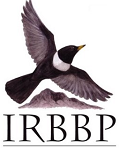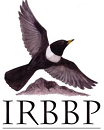
Ring Ouzel
Turdus torquatus
Lon creige
Status All Ireland: Breeding (Republic only)
Population estimate all Ireland: < 5 pairs
Trend (12 years): Decline
Trend (40 years): Decline
Survey timing: April to June
Habitat: Mountains (montane)
Occurrence: Sparsely distributed. Restricted to mountain regions of the northwest and southwest (Donegal and Kerry). Formerly bred more widely (and may stilll in very small numbers) in other counties including Wicklow, Leitrim, Waterford and Down).
Habitat preference (simple description of preferred nesting habitat): Nests amongst boulders and sparse vegetation in scree slopes and rock faces in mountains, especially above corrie lakes. Usually at altitudes above 250m.
Preferred ways to establish breeding status: The Ring Ouzel’s terrain is difficult to survey thoroughly. Getting into its breeding habitat will invariably involve a considerable climb. Males sing from prominent boulders or isolated mountain ash trees, high up rock faces or steep valley sides. The song is distinctive – a loud, plaintive, fluty “chewy-chewy-chewy” – quite monotonous, but it is far- carrying and it is the best way to detect presence of Ring Ouzels. To prove breeding, need to get up close to the bird’s territory, get into a position where you can see a wide sweep of the scree or rock face and wait to either see an adult carrying food or see a fledged juvenile. The best time to see most activity feeding fledged young (which may be scattered over a large area) is late May early June. Ring Ouzels can be very elusive and much time and patience is required.


